Amelia Earhart wasn’t just the first woman to fly solo across the Atlantic—she was also a nurse during WWI, a mechanic, and even a fashion designer for women’s aviation gear. From setting altitude records to befriending First Lady Eleanor Roosevelt, Earhart’s life was full of daring adventures. Yet, her disappearance in 1937 during a round-the-world flight remains one of history’s most enduring mysteries.
What else did this fearless aviator accomplish? In this article, we’ll uncover 12 fun facts about Amelia Earhart that will show you the lesser-known sides of her extraordinary life.
1. First Woman to Fly Solo Across the Atlantic
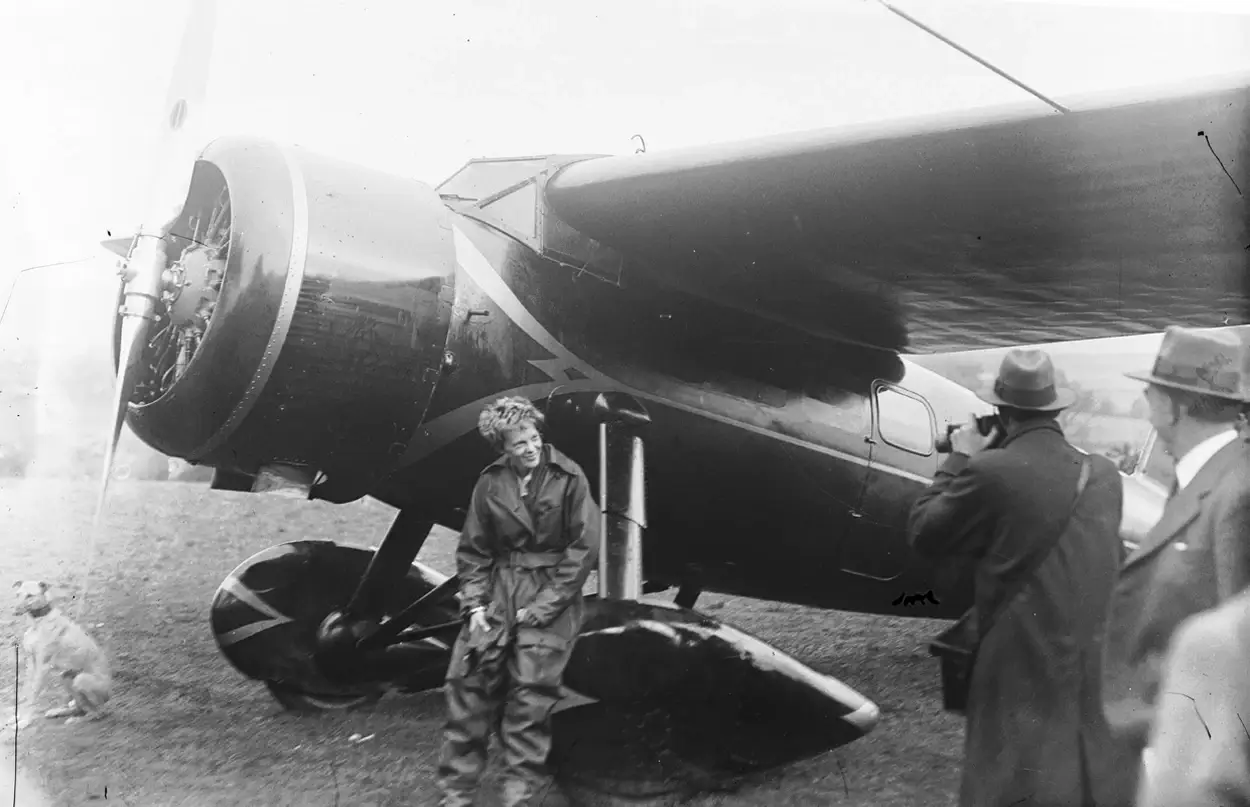
Image: joecampbellart.com
In 1932, Amelia Earhart made history as the first woman to fly solo across the Atlantic Ocean. Taking off from Harbour Grace, Newfoundland, on May 20, she battled harsh weather, mechanical issues, and even a fire in her plane’s engine during the 15-hour flight. Despite these challenges, Earhart landed safely in a farmer’s field near Londonderry, Northern Ireland. Her Lockheed Vega covered 2,026 miles, and her achievement was celebrated globally, cementing her status as an aviation pioneer.
Her motivation wasn’t just about setting records; Earhart sought to prove her skills in a field dominated by men, gaining the respect of fellow aviators. This flight earned her a Distinguished Flying Cross from Congress, the first woman to receive this honor. It was a milestone not only for aviation but also for women’s role in the field.
2. Started as a Nurse in World War I
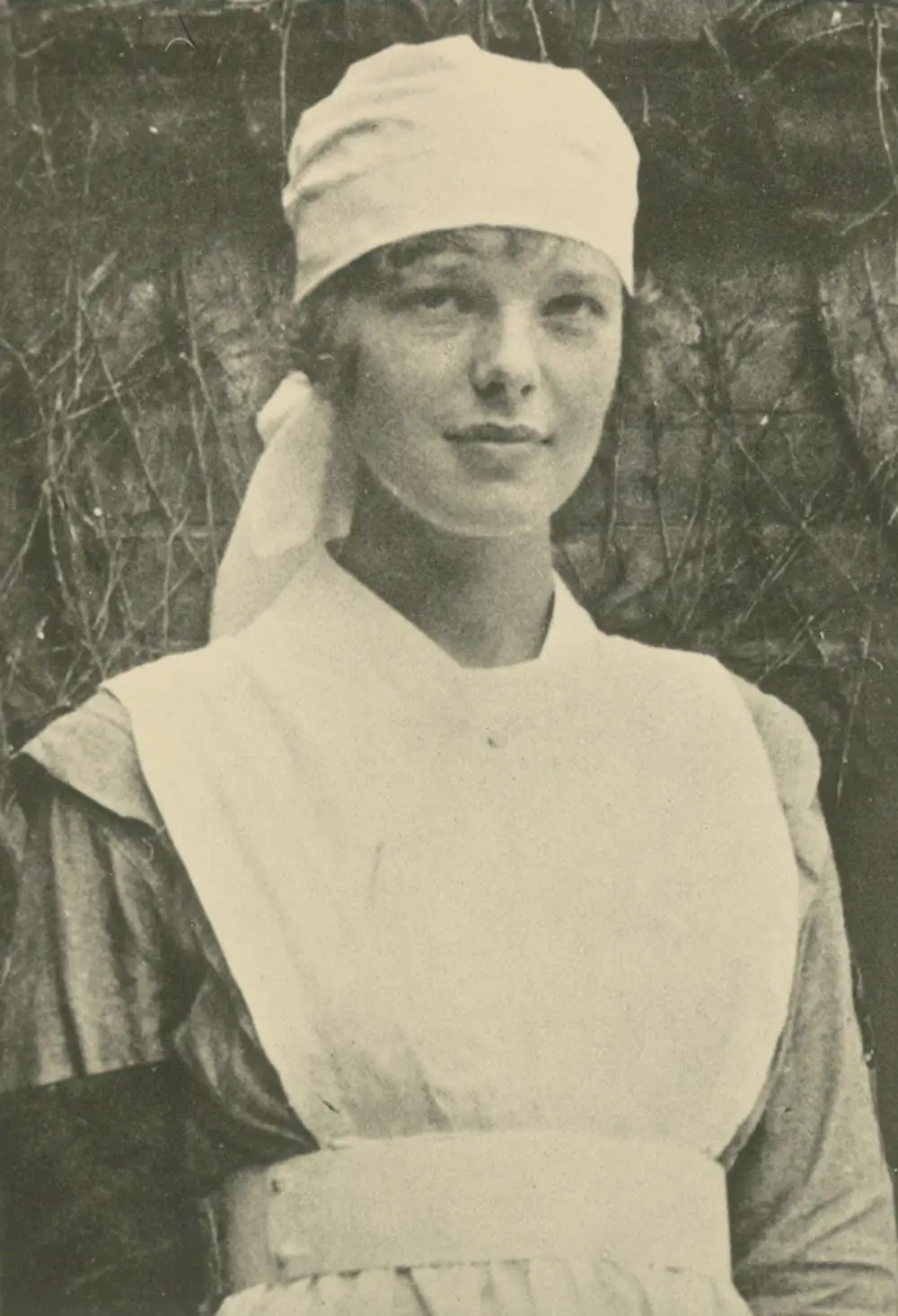
Image: picsart.com
Before Amelia Earhart became a legendary aviator, she volunteered as a nurse’s aide for the Red Cross during World War I. While visiting her sister in Toronto in 1917, she was deeply moved by the sight of wounded soldiers returning from the front. Many of these soldiers were pilots, which sparked her early interest in aviation.
Earhart spent her time assisting in military hospitals, tending to injured soldiers and gaining an understanding of the sacrifices they made. This experience strengthened her resolve to contribute to society, ultimately leading her to pursue flying after the war.
3. Set a Female Altitude Record in 1922
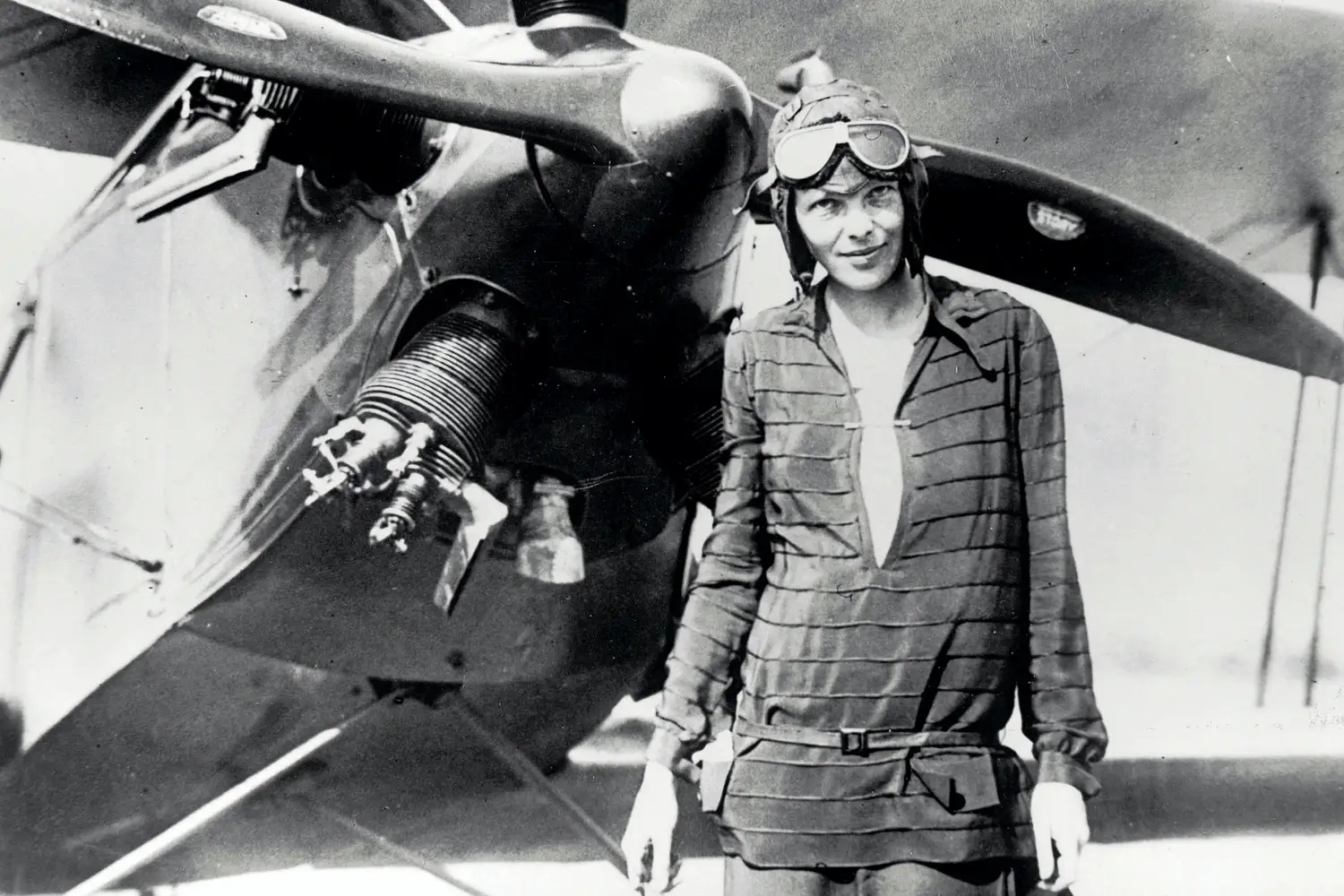
Image: documentarytube.com
On October 22, 1922, Amelia Earhart achieved her first major aviation milestone by setting a world altitude record for female pilots. Flying her bright yellow Kinner Airster biplane, fondly nicknamed “The Canary,” she soared to an altitude of 14,000 feet (4,300 meters), an impressive feat at the time.
This record marked Earhart as a rising star in the world of aviation and was a testament to her determination to excel in what was still a male-dominated field. Her altitude achievement laid the groundwork for the many records and honors that would follow.
4. Fashion Designer for Practical Women’s Clothing
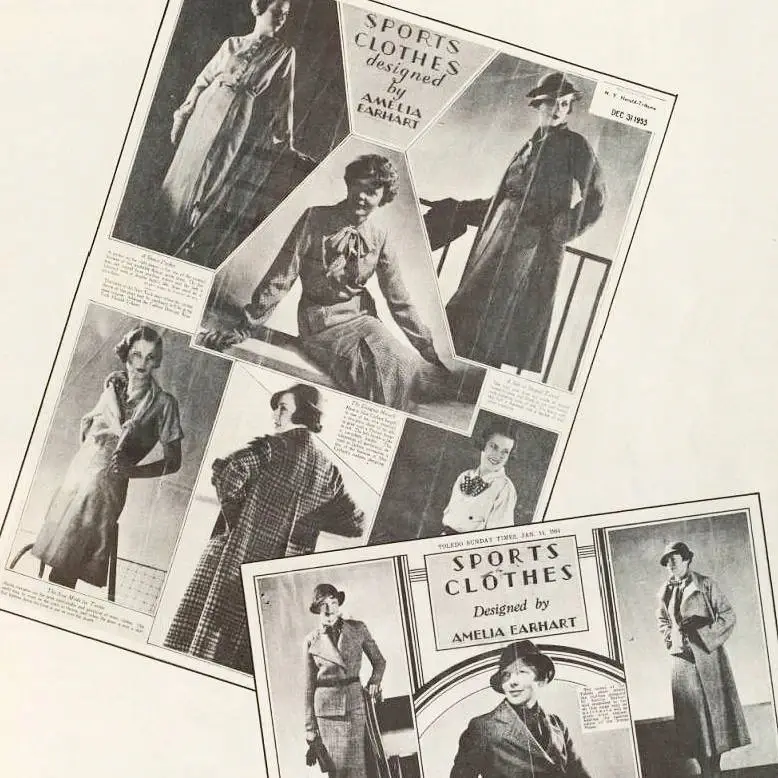
Image: Purdue Archives and Special Collections / Facebook
In 1933, Amelia Earhart expanded her influence beyond aviation by launching her own clothing line, “Amelia Earhart Fashions.” Designed with practicality in mind, her clothing catered to active women who needed functional yet stylish outfits.
Earhart’s designs featured innovative details like parachute silk fabrics, propeller-shaped buttons, and matching separates, allowing flexibility for women to mix and match outfits. Her blouses even had longer shirttails to stay neatly tucked in during activity.
Sold at stores like R.H. Macy & Co., her line aimed to provide affordable, practical fashion during a time of economic hardship. Although it didn’t succeed financially, it left a lasting impact on women’s sportswear design.
5. Her Childhood Nickname Was ‘Meelie’
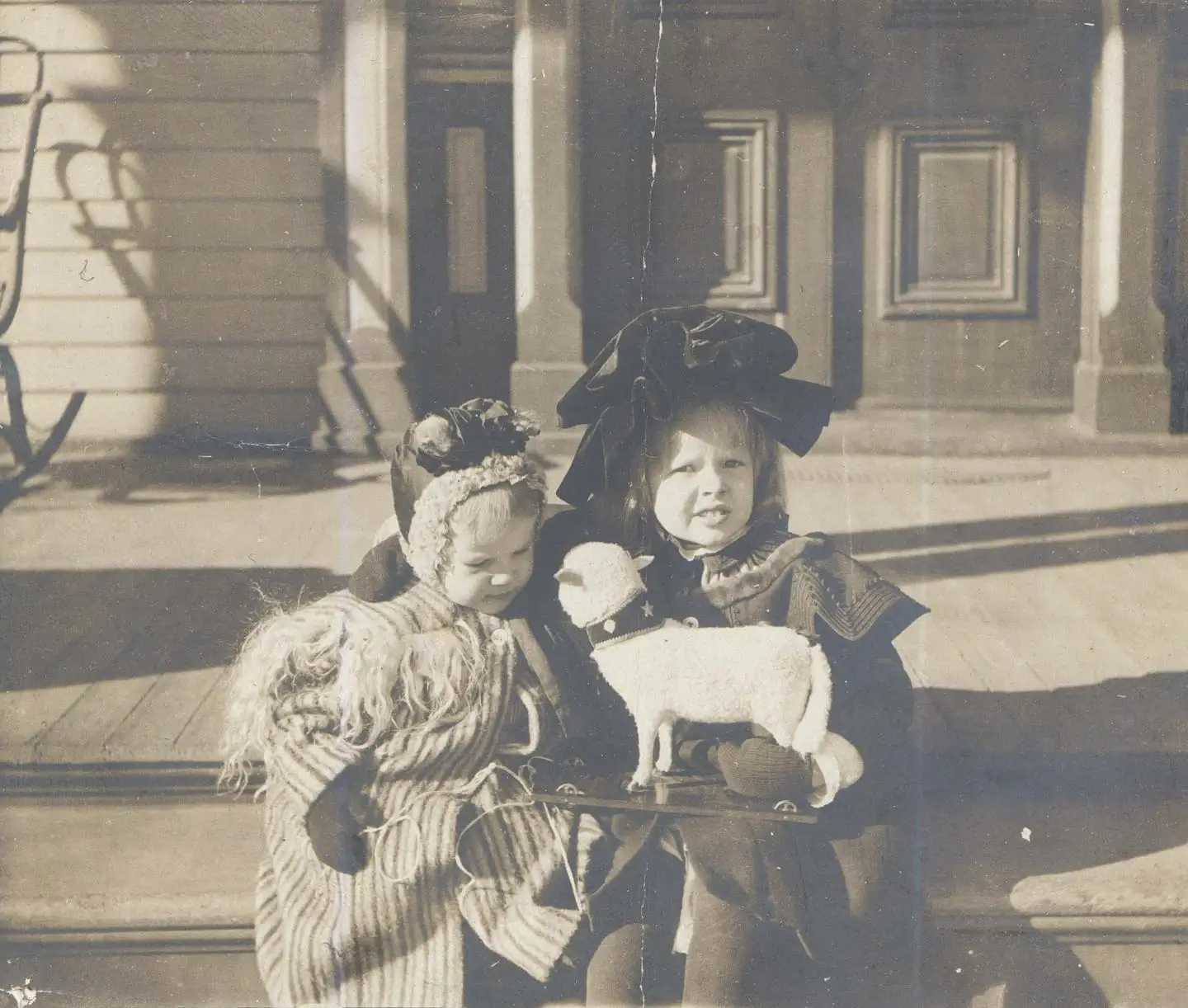
Amelia Earhart with her sister Grace Muriel (pictured here on the left). Image: Amelia Earhart Hangar Museum / Facebook
Amelia Earhart’s younger sister, Grace Muriel, affectionately called her “Meelie” because as a child, Muriel had trouble pronouncing Amelia’s name. This endearing nickname stuck with her family and close friends throughout her life. Born on July 24, 1897, in Atchison, Kansas, Earhart grew up as a bold and adventurous girl, showing early signs of the fearless spirit that would later define her aviation career.
The close bond between the two sisters lasted throughout their lives, with Muriel later co-authoring a biography about Amelia.
6. Earhart’s Family Initially Opposed Her Flying
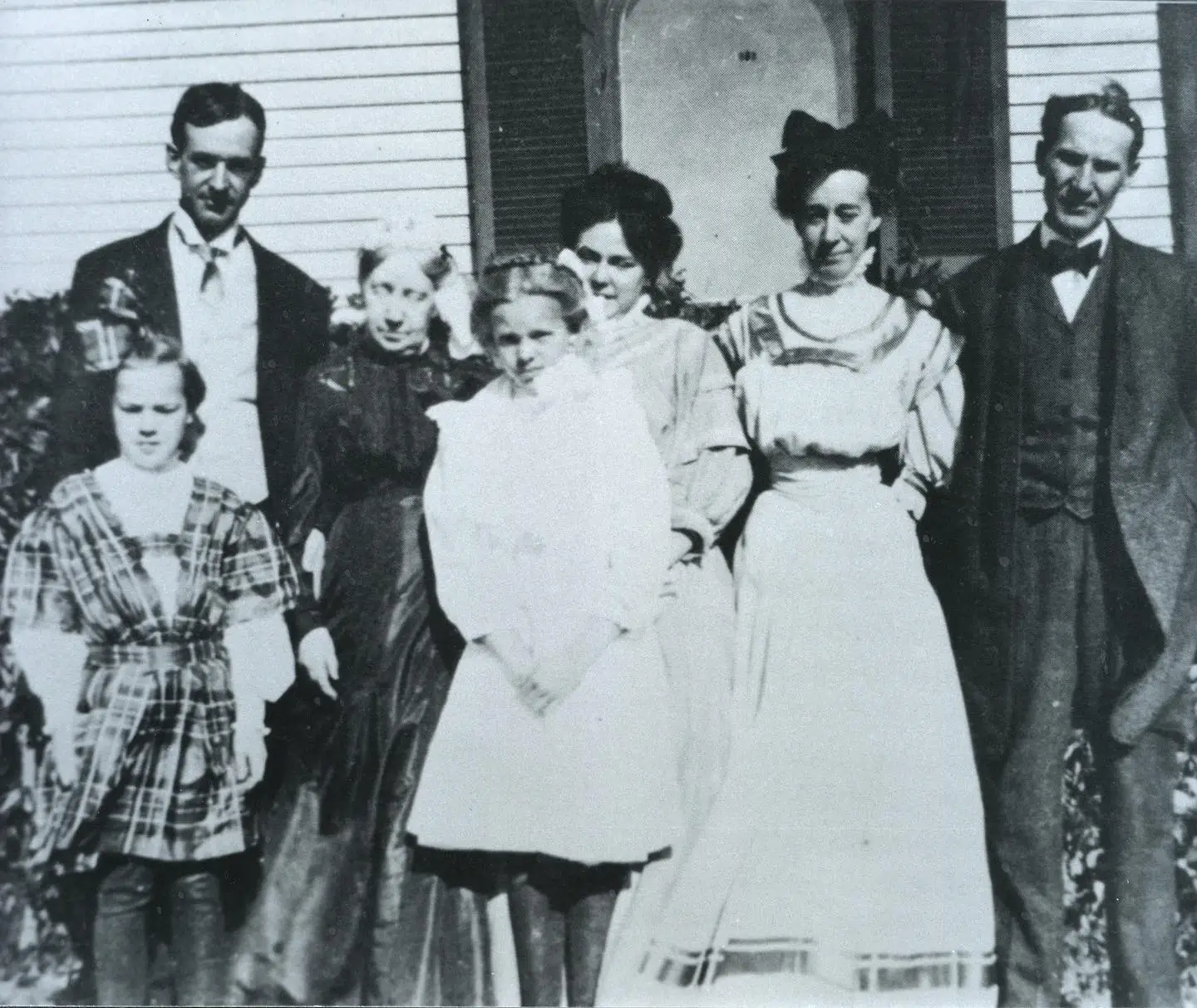
Pictured from left to right: Muriel and Amelia (front row), Uncle Carl Otis, Grandmother Amelia Otis, Aunt Anna Otis, mother Amy Otis Earhart, father Edwin Earhart (back row). Image: Amelia Earhart Hangar Museum / Facebook
Amelia Earhart’s passion for aviation faced resistance from her family, particularly from her parents, who were concerned about the dangers of flying. During the early 20th century, aviation was seen as highly risky, and her parents feared for her safety. Her father, Samuel Earhart, was supportive but also anxious, while her mother, Amy, initially opposed the idea.
Despite their worries, Amelia pursued her dream relentlessly, gaining her pilot’s license in 1921 and becoming a trailblazer in aviation history. Her family’s concerns gradually lessened as they witnessed her growing success and commitment to the field.
7. Taught Herself to Fly from a Stunt Pilot

Amelia Earhart (right) as a student pilot with flight instructor Neta Snook (left). Image: airandspace.si.edu
Amelia Earhart’s first flying lessons came from Neta Snook, a pioneer in her own right as one of the earliest female stunt pilots. Earhart was captivated by aviation after her first flight in 1920, and by 1921, she began formal training under Snook at Kinner Field in California. Snook’s unconventional flying style, rooted in aerobatics and stunt maneuvers, gave Earhart an early exposure to both the technical and daring aspects of aviation.
This unique mentorship laid the foundation for Earhart’s remarkable career, helping her develop the skills needed to make history in the sky.
8. Loved Horses as a Child

Image: imgur.com
Before Amelia Earhart fell in love with flying, she was passionate about horseback riding. As a young girl, she developed a strong bond with horses, riding them frequently while growing up in Kansas. This early fascination with horses showcased her adventurous spirit and love for independence, traits that would later define her aviation career.
Although riding was her first love, it eventually gave way to her even greater passion—flying—once she experienced her first plane ride in 1920. The courage and confidence she gained from riding may have contributed to her boldness in aviation.
9. A Passionate Author and Public Speaker
Amelia Earhart wasn’t just a groundbreaking aviator but also an inspiring writer and speaker. She published several works, including her famous book 20 Hrs. 40 Min. (1928), a personal account of her historic transatlantic flight.
Earhart detailed her experiences as the first woman to fly across the Atlantic and discussed the future of aviation, especially for women. She also penned other books like The Fun of It (1932) and regularly gave lectures, advocating for women’s roles in aviation and inspiring countless audiences. Earhart’s high-spirited charm and adventurous determination were evident in both her writing and public appearances.
10. Close Friends with First Lady Eleanor Roosevelt
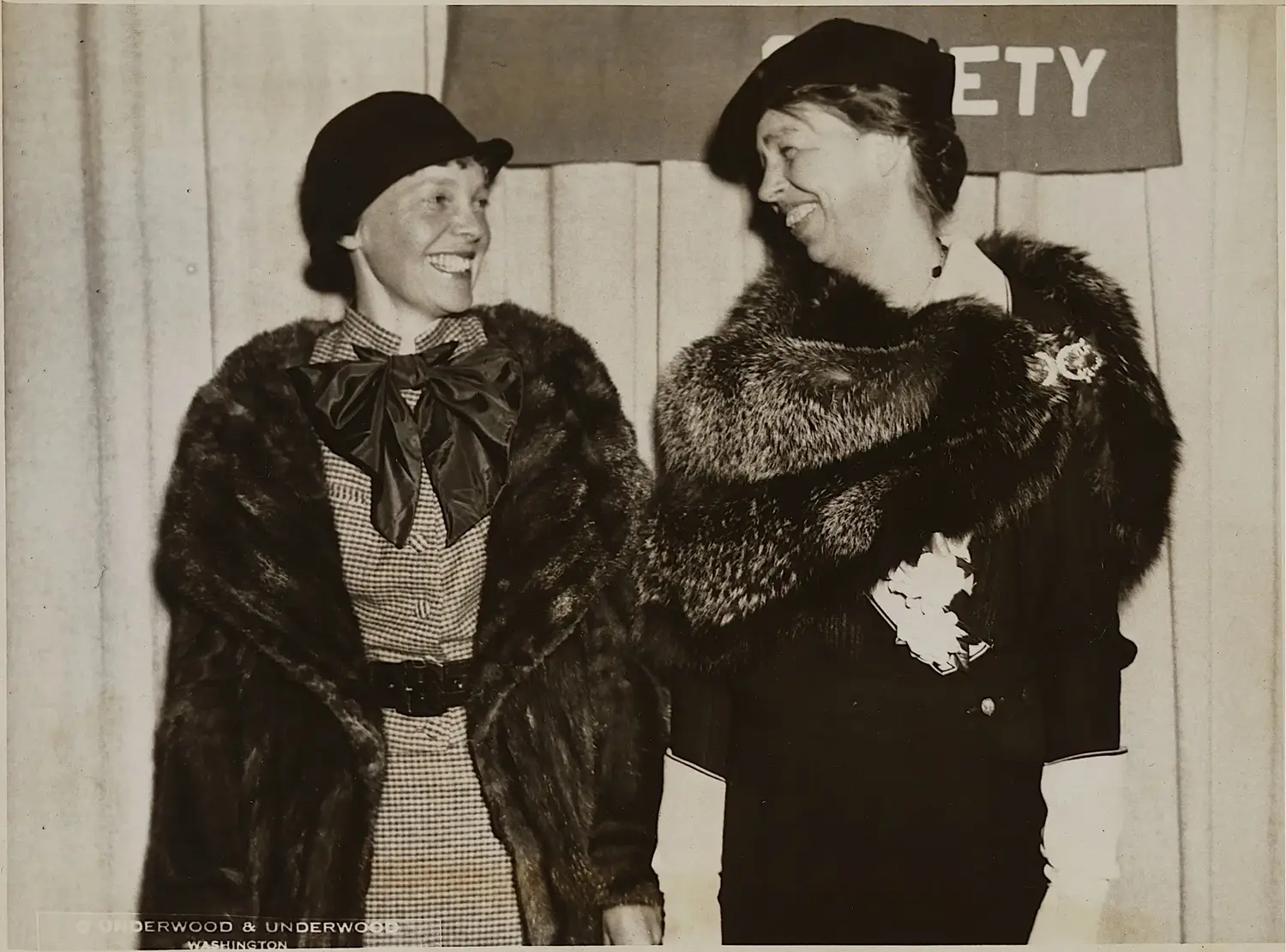
Image: Reddit
Amelia Earhart and Eleanor Roosevelt shared a strong friendship, bonded by their mutual passion for women’s rights and aviation. The two women first met in 1932, shortly after Earhart’s historic transatlantic solo flight. Roosevelt, known for her unconventional spirit, was deeply inspired by Earhart and even pursued a student pilot’s license.
In 1933, the pair famously made headlines when they left a White House dinner in evening gowns to embark on a spontaneous flight to Baltimore and back. Earhart piloted the Curtiss Condor while Roosevelt sat beside her in the co-pilot seat. Their friendship highlighted their shared dedication to breaking gender barriers and promoting female empowerment.
11. Disappeared Attempting a Round-the-World Flight

Amelia Earhart and Fred Noonan. Image: insider.com
In 1937, Amelia Earhart, along with her navigator Fred Noonan, embarked on an ambitious round-the-world flight in her Lockheed Electra. After covering 22,000 miles, the pair departed Lae, New Guinea, on July 2, aiming to reach Howland Island, a tiny Pacific atoll. However, they vanished en route, and despite extensive sea and air search efforts by the U.S. Navy and Coast Guard, no trace of Earhart, Noonan, or the aircraft was ever found.
The official search was called off on July 19, 1937, and they were declared lost at sea, sparking decades of mystery and speculation.
12. Featured on a U.S. Postage Stamp in 1963
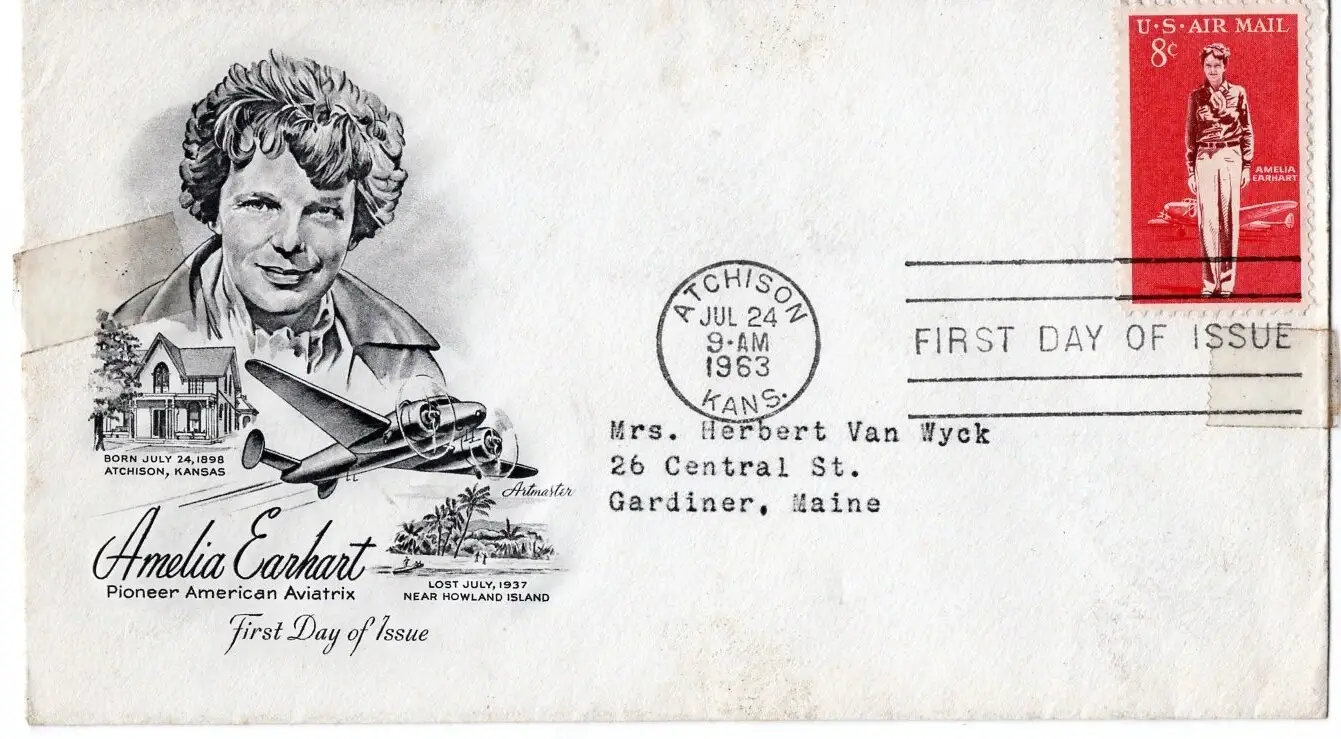
Image: hipstamp.com
In 1963, Amelia Earhart was commemorated by the U.S. Postal Service with an 8-cent airmail stamp, honoring her aviation achievements. The stamp was issued on July 24, her birthday, and featured a portrait of Earhart standing next to her famous Lockheed Electra airplane, the same model she flew on her ill-fated around-the-world attempt.
The stamp marked Earhart as a pioneering figure in both aviation and women’s rights, underscoring her lasting legacy in American history. With nearly 64 million copies printed, it became a symbol of Earhart’s enduring influence.
FAQ
What’s Amelia Earhart’s favorite food?
Amelia Earhart’s favorite food was tomato juice, which she often drank during flights. It was one of her go-to beverages because it was easy to carry and provided her with energy during long flights.
Was Amelia Earhart blind and deaf?
No, Amelia Earhart was neither blind nor deaf. She had no such impairments during her lifetime and was fully capable of flying and navigating.
Did Amelia Earhart like coffee or tea?
Amelia Earhart was known to prefer coffee over tea. She often drank it during her flights to stay awake and focused.
How old would Amelia Earhart be if she was still alive?
If Amelia Earhart were still alive today, she would be 127 years old, as she was born on July 24, 1897.
Did Amelia Earhart have any pets?
Yes, Amelia Earhart had a dog named “Vulcan,” a Boston Terrier, and she was also known to love animals in general.
Was Amelia Earhart homeschooled?
Amelia Earhart was not homeschooled. She attended public and private schools during her childhood, though she did face interruptions in her education due to her family’s financial difficulties.
What were Amelia Earhart’s favorite hobbies?
Aside from flying, Amelia Earhart loved reading, photography, and spending time outdoors. She enjoyed adventurous activities like horseback riding and playing sports.
Was Amelia Earhart’s plane found?
No, Amelia Earhart’s plane, the Lockheed Electra, has never been definitively found. Despite numerous searches and investigations, her disappearance remains one of history’s most enduring mysteries.





